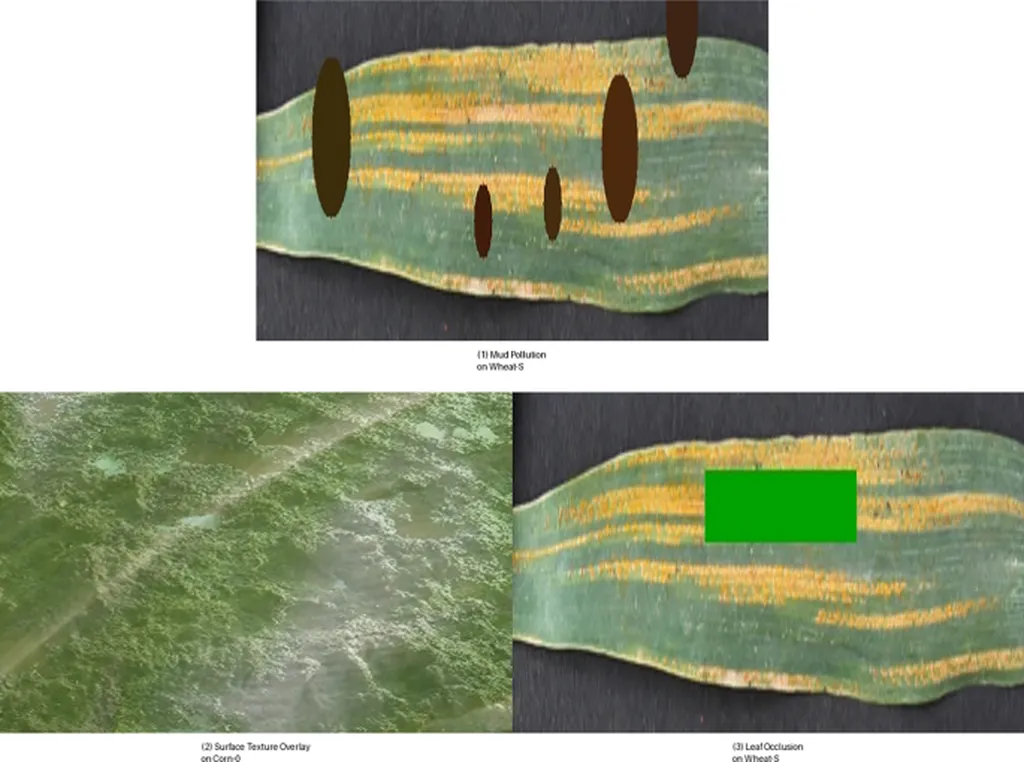In the ever-evolving landscape of precision agriculture, a groundbreaking study published in the *Journal of Big Data* (translated from Arabic as “Journal of Large Data”) is set to revolutionize how we combat plant diseases, particularly in wheat and corn crops. The research, led by Mahmoud Khaled Elfouly from the Faculty of Computers and Artificial Intelligence at Beni-Suef University, introduces a novel deep learning framework that promises to enhance disease detection and severity assessment, ultimately safeguarding global food security.
Wheat yellow rust and corn northern leaf spot are among the most devastating diseases affecting these staple crops. Traditional methods of disease assessment often fall short, and current deep learning models have limitations, such as focusing too narrowly on single crops or diseases and relying on small datasets. Elfouly’s research addresses these challenges head-on with a model named WY-CN-NASNetLarge, based on the NASNetLarge architecture.
The model leverages transfer learning and fine-tuning techniques, trained on diverse datasets including Yellow-Rust-19, Corn Disease and Severity (CD&S), and PlantVillage. This comprehensive approach ensures the model’s robustness across various disease conditions. “Our model not only identifies diseases but also assesses their severity with remarkable accuracy,” Elfouly explains. “This is a significant step forward in precision agriculture, enabling farmers to take timely and targeted actions.”
The WY-CN-NASNetLarge model boasts an impressive 97.33% accuracy in classifying disease severity, outperforming other state-of-the-art models like ResNet152v2, InceptionResNetV2, and DenseNet201. The research employs data augmentation, the AdamW optimizer, dropout training, and mixed precision training to enhance performance and prevent overfitting. These advancements make the model highly reliable and efficient in real-world agricultural settings.
The implications of this research are vast. By providing accurate and rapid disease detection and severity assessment, the model can help farmers minimize crop loss and optimize resource use. “This technology has the potential to transform agricultural practices, making them more sustainable and efficient,” Elfouly notes. “It’s not just about detecting diseases; it’s about empowering farmers with the tools they need to protect their crops and ensure food security.”
The commercial impacts of this research are equally significant. Precision agriculture is a rapidly growing sector, and technologies like WY-CN-NASNetLarge can drive innovation and investment. Farmers and agribusinesses can benefit from reduced crop losses, increased yields, and improved sustainability. The model’s ability to handle multiple diseases and crops makes it a versatile tool for the agricultural industry.
As we look to the future, this research paves the way for further advancements in smart farming technologies. The integration of deep learning and big data analytics in agriculture is just the beginning. “We are at the cusp of a new era in agriculture,” Elfouly says. “With continued research and development, we can expect even more sophisticated tools that will revolutionize how we grow and protect our crops.”
In conclusion, Mahmoud Khaled Elfouly’s research represents a significant leap forward in precision agriculture. By addressing the limitations of current models and introducing a highly accurate and efficient framework, the study sets a new standard for disease detection and severity assessment. As published in the *Journal of Big Data*, this work not only enhances our understanding of plant diseases but also provides practical solutions that can be implemented in the field. The future of agriculture is bright, and technologies like WY-CN-NASNetLarge are leading the way.

